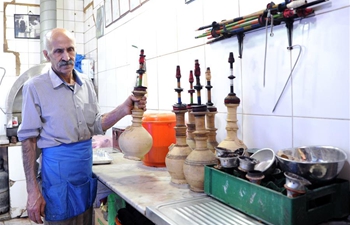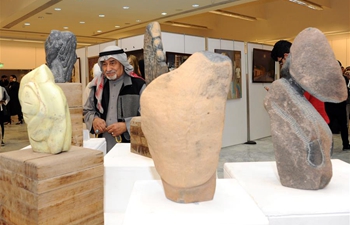CHICAGO, Dec. 23 (Xinhua) -- Researchers at the University of Illinois (UI) have honed a technique for handling tiny, soft particles using precisely controlled fluid flows that act as gentle microscopic hands, according to a news release posted on UI's website on Monday.
In three studies, UI researchers detail the technology and application of the Stokes trap, a method for manipulating small particles using only fluid flow. In the newest study, they used the Stokes trap to study the dynamics of vesicles, squishy fluid-filled particles that are stripped-down versions of cells and have direct relevance to biological systems.
"We found that when vesicles are deformed in a strong flow, they stretch into one of three distinct shapes - symmetric dumbbell, asymmetric dumbbell or ellipsoid shape," said Dinesh Kumar, a chemical and biomolecular engineering graduate student at UI. "We observed that these shape transitions are independent of the viscosity difference of the fluids between vesicle interior and exterior. This demonstrates that the Stokes trap is an effective way to measure stretching dynamics of soft materials in solution and far from equilibrium."
With new data, the researchers were able to produce a phase diagram that can be used to determine how certain types of fluid flow will influence deformation and, ultimately, the physical properties of soft particles when pulled on from different flow directions.
"For example, products like fabric softeners - which are composed of vesicle suspensions - do not work correctly when they clump together," Kumar said. "Using the Stokes trap, we can figure out what types of particle interactions cause the vesicles to aggregate and then design a better-performing material."
The technique is currently limited by the size of particles that the Stokes trap can catch and handle, the researchers said. They are working with particles that generally are larger than 100 nanometers in diameter, but in order for this technology to apply more directly to biological systems, they will need to be able to grab particles that are 10 to 20 nanometers in diameter - or even down to a single protein.
The researchers are currently working to capture smaller particles and to apply the Stokes trap to study membrane proteins.
The newest study has been published in the journal Soft Matter, while the previous two have been published in the journals Physical Review Fluids and Physical Review Applied.

















